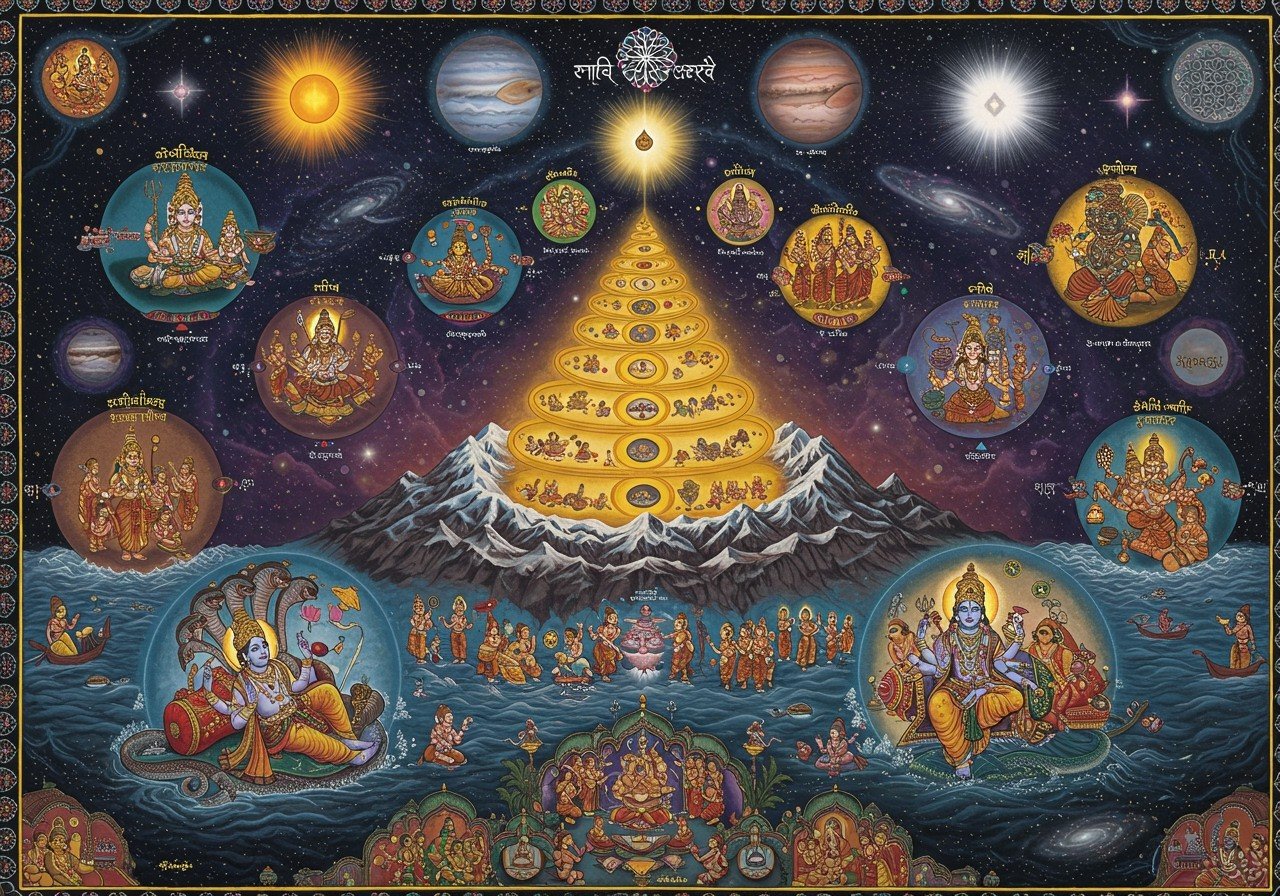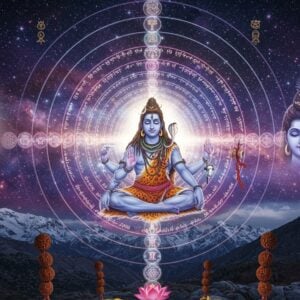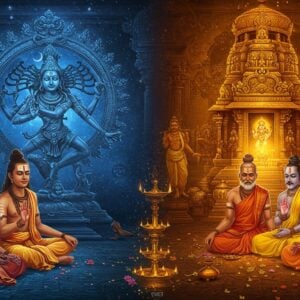
Hindu cosmology offers a fascinating perspective on the universe, deeply rooted in ancient scriptures and philosophical concepts. It elucidates the creation, preservation, and eventual dissolution of the universe, utilizing vivid diagrams, charts, and maps. These visual aids make complex ideas more accessible and engaging for both scholars and practitioners.
Hindu Cosmology Diagrams: Visualizing the Cosmic Layers
Hindu cosmology diagrams, often depicted as concentric circles, showcase the intricate structure of the universe. These circles represent various realms, including the earthly plane (Bhurloka), the atmospheric or intermediate space (Antariksha), and the celestial regions (Swargaloka). Mount Meru, the mythical mountain at the universe’s center, plays a crucial role, surrounded by the four cardinal directions, each guarded by a deity. The lotus flower, a symbol of purity and divine birth, frequently represents the universe’s unfolding.
Hindu Cosmology Charts: Mapping Time and Cycles
Charts within Hindu cosmology detail the cosmic cycles and timelines, particularly the four Yugas: Krita (Satya), Treta, Dvapara, and Kali. Each Yuga possesses distinct characteristics and durations. These cycles intertwine with the Mahayuga, a grand cycle encompassing all four Yugas, and extend to even longer timeframes like Kalpas and Manvantaras. Avatars, divine incarnations appearing in each Yuga to restore balance and righteousness, are also depicted in these charts.
Hindu Cosmology Maps: A Spatial Representation of Creation
Cosmology maps provide a spatial representation of the universe, showcasing the seven concentric continents (Saptadvipas) and oceans. Jambudvipa, the central continent, is where humanity resides. These maps also depict celestial bodies like the sun, moon, and planets, illustrating their movements based on ancient geocentric models. The underworld (Patala) and the various hells (Narakas) are represented as layers beneath the earth’s surface, each with unique attributes and purposes.
Cultural and Religious Significance: Connecting to Tradition
These visual tools are essential for teaching Hindu cosmology and philosophy, making abstract ideas more tangible and relatable. In religious rituals, these depictions serve as focal points for meditation and contemplation. They are integrated into traditional Indian art and architecture, enriching temple designs and iconography, creating sacred spaces.
Modern Interpretations and Adaptations: Bridging the Past and Present
Today, artists and scholars continue to adapt Hindu cosmology for contemporary audiences, leveraging digital media and technology. Interactive experiences bring ancient concepts to life, while artists blend traditional motifs with modern aesthetics, developing new forms of visual storytelling. Online platforms facilitate global sharing of these interpretations, fostering cross-cultural understanding.
Hindu Cosmology’s Influence on Indian Art and Architecture
Hindu cosmology has profoundly impacted Indian art, architecture, and sacred spaces. This influence is best understood through the intricate and vibrant expressions of Hindu art, which often communicate complex themes of recursion, paradox, and the interplay of opposites as they relate to human experience. Consider these key aspects:
- Temple Art and Architecture: Hindu temples, designed as pathways to moksha (spiritual liberation), often feature sculptures depicting the four aims of life: dharma (righteous conduct), artha (material prosperity), kama (pleasure and love), and moksha. Temple walls are adorned with sculptures and images of deities, scenes from mythology, and auspicious symbols representing growth and prosperity. The Sri Yantra, an iconic representation of the universe, exemplifies the principle of recursion. The entire temple, including its sculptures, dances, music, and paintings, constitutes a holistic work of art. You can find beautiful depictions of deities and other spiritual figures in our Radha Krishna Bigraha and Lord Shiva Murti collections.
- Deity Depictions: Deities are frequently portrayed with multiple arms, signifying their power and capacity to perform many actions. Multiple heads may also be depicted, representing various facets of their character and attributes. Explore the symbolism of deities further with our blog post on the Ramayana’s influence on Hindu spirituality.
- Cosmic Symbolism: The Sri Yantra, with its tripartite divisions and alternating polarities, recursively represents the universe. Vedic altars, symbolizing the universe, reconcile lunar and solar cycles. Fire altars further represent the earth, space, and the sky. Deepen your understanding of these symbols with resources available at Rangoli art and symbolism.
- Sacred Maps: Indian maps, both painted and printed, offer cosmological depictions, often featuring Jambudvipa with Mount Meru at its center. The human body is sometimes superimposed onto these schemes, highlighting the connection between the microcosm and the macrocosm.
- Jain Influence: The Jain tradition envisions the universe divided into three worlds: the upper (gods), the middle (mortals), and the lower (damned). Paintings of the mortal world are prevalent in Jainism, as it is the realm where liberation from the cycle of rebirth is attainable.
Poojn.in: Connecting You with Hindu Cosmology
At Poojn.in, we provide authentic products that allow you to incorporate the sacred elements of Hindu cosmology into your home and personal spiritual practice. Our selection includes:
- Deity Idols: Shri Krishna idols and other divine figures in various sizes and styles, suitable for your home temple. Discover our collection at this link.
- Traditional Paintings: Depictions of the Dashavatar (ten incarnations of Vishnu) and other significant mythological events.
- Sacred Texts: The Bhagavad Gita and Puranas, offering detailed cosmological descriptions.
- Puja Items: Items specifically for different deities and avatars.
- Altar Decorations: Items featuring cosmic symbols and sacred geometry.
- Incense and Dhoop: For creating a sacred atmosphere during worship. Find our Mangalam Camphor products perfect for your puja rituals.
Visit www.poojn.in to explore our complete collection.
Embracing the Cosmic Tapestry
Hindu cosmology, through its art and architecture, provides a vibrant tapestry of spiritual expression. These visual traditions offer a powerful connection to the divine and the cosmos, weaving them into the fabric of daily life. By embracing these traditions, we gain a deeper appreciation for our place within the universe.
FAQs on Hindu Cosmology Depictions
What is the significance of visual representations in Hindu Cosmology? Visual representations translate complex cosmological ideas into accessible images, aiding understanding of creation, structure, and the universe’s workings.
How are Hindu Cosmology diagrams used? Diagrams illustrate the universe’s layered structure—earth, celestial bodies, and spiritual realms—facilitating visualization of spiritual teachings.
What elements are found in a Hindu Cosmology chart? Charts depict elements like the earth, planets, stars, higher realms, time cycles, deities, and significant cosmic events.
Why is a Hindu Cosmology map important? Maps offer spatial representations of the universe, showcasing the arrangement of realms and the interconnectedness of creation.
Where can one find authentic Hindu Cosmology depictions? Authentic depictions can be found in ancient scriptures, temples, traditional art, and online platforms specializing in religious artifacts. Poojn.in offers a curated selection of such items, allowing you to bring these sacred representations into your home. Visit www.poojn.in to explore our collection.
How do these depictions enhance spiritual understanding? Visual guides to the universe’s structure inspire meditation and reflection on the vastness and unity of creation. You can learn more about spiritual practices through our blog post on Bhakti Yoga.
Are there different styles of Hindu Cosmology depictions? Regional and cultural variations influence different styles, each emphasizing specific aspects or deities within Hindu cosmology.


